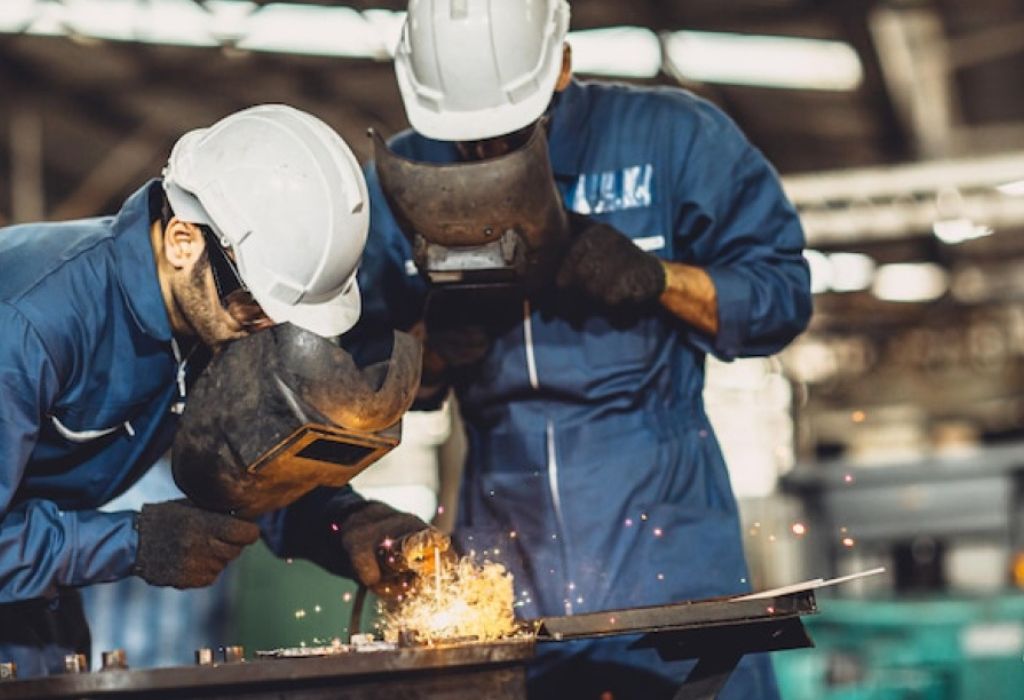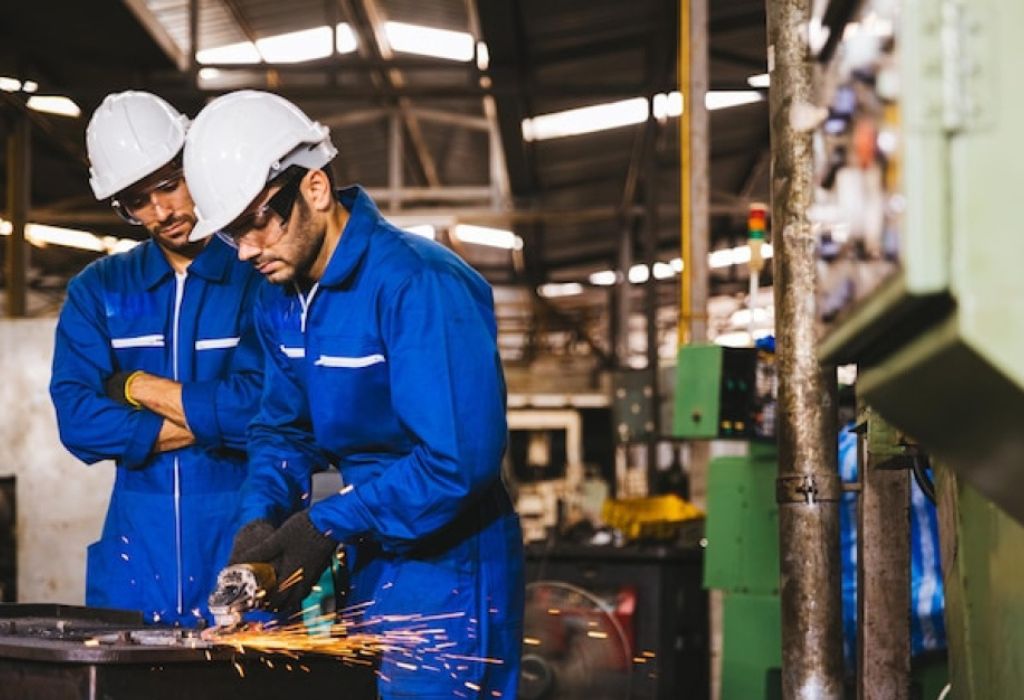A construction site hums with sparks flying, steel plates clanging, and welding arcs glowing.
Yet behind every welder, there is often someone ensuring the work flows smoothly.
This unseen but vital role belongs to the welder helper.
Many people imagine welders working alone, but in reality, helpers keep projects on track. Without them, welders would spend more time carrying equipment than creating strong welds.
This sparks curiosity—what exactly do welder helpers do each day?
For newcomers to the trade, the position of welder helper can be a gateway to a stable and rewarding career. According to the U.S. Bureau of Labor Statistics, there are more than 418,200 welding-related jobs in the country, with steady demand across construction, energy, and shipbuilding.
Helpers are a crucial part of this workforce.
Understanding their duties, skills, and career pathways provides valuable insight into how projects succeed.
This guide breaks down their responsibilities, pay, work environments, and opportunities for growth.
The Core Role of a Welder Helper
Welder helpers support welders with tasks that keep the job running efficiently. They handle preparation, logistics, cleanup, and safety.
They transport tools, prepare materials, and assist in setting up welding areas. Helpers may also position parts and hold materials in place while welders focus on precision work.
What do welder helpers do daily?
They assist with prep, cleanup, and equipment handling.
Do helpers perform welding?
Not usually, though they may tack weld under supervision.
Is safety part of their role?
Yes, they clear hazards, monitor sparks, and check PPE.
Are helpers apprentices?
Not exactly, but many transition into apprenticeships.
Do they travel for jobs?
Yes, especially when welders work at remote or mobile sites.
Tools and Equipment They Handle

Helpers ensure welders always have the right tools at hand. They clean, maintain, and organize equipment such as grinders, clamps, and torches.
They also transport gas cylinders, cables, and heavy gear. Prepping materials—cutting, grinding, or beveling metal pieces—is often their responsibility.
Do helpers set up welding machines?
Yes, under supervision to ensure accuracy.
Can they use grinders and torches?
Often, especially for surface prep or cutting.
Do they inspect tools?
Yes, they check for defects and wear before use.
Do they refill gas tanks?
They transport tanks, usually under strict safety rules.
Are they trained on safety gear?
Yes, including respirators, gloves, and shields.
Training and Skills Needed
Most welder helpers start with little formal training. A high school diploma is preferred, but on-the-job learning is common.
Mechanical aptitude, physical stamina, and strong safety awareness are essential. Many gain OSHA training or certifications that improve job prospects.
Do welder helpers need certification?
Not required, but OSHA or safety training helps.
What skills matter most?
Physical strength, detail orientation, and reliability.
Is math important?
Yes, for measuring and assisting welders with layouts.
Do helpers need strength?
Yes, the role requires lifting and moving materials.
Can this lead to a career?
Yes, helpers often become welders with training.
Workplace Environments
Helpers work in varied and often demanding environments. Construction sites, factories, pipelines, and shipyards are common workplaces.
Conditions may involve extreme heat, sparks, confined spaces, or outdoor exposure. PPE is essential for safety in these environments.
Where do helpers work most often?
Construction, shipyards, and fabrication shops.
Do they work outdoors?
Yes, often on large projects or pipelines.
Is it dangerous?
Yes, without proper safety gear and training.
Are shifts long?
Many shifts run 10–12 hours.
Do helpers travel?
Yes, especially when working with mobile welding teams.
Salary and Job Outlook
Welder helpers earn $16–$20 per hour, translating to about $33,000–$42,000 annually depending on region and industry.
Job demand is strong, fueled by construction, infrastructure upgrades, and energy projects. Overtime opportunities also increase pay significantly.
How much do welder helpers earn?
Around $16–$20 per hour on average.
Do they get overtime?
Yes, often at time-and-a-half rates.
Is demand growing?
Yes, due to ongoing infrastructure projects.
Do unions cover helpers?
Sometimes, depending on the employer.
Can helpers earn more?
Yes, by advancing to full welding roles.
How the Role Differs from Welders

While welders execute the technical welds, helpers keep the operation moving. Welders handle certification-level tasks, while helpers manage support duties.
The pay gap reflects this difference, with welders often earning double what helpers make. Still, the helper role is an essential stepping stone.
Do helpers weld?
Rarely, but sometimes tack welding is allowed.
Is training longer for welders?
Yes, welding requires certification and advanced training.
Can helpers become welders?
Yes, with experience and additional schooling.
Do helpers read blueprints?
They assist, but welders interpret and follow them.
Is pay higher for welders?
Yes, often significantly higher.
Career Pathways for Welder Helpers
Many helpers view the role as a gateway into welding. After gaining experience, they pursue certifications in MIG, TIG, or Stick welding.
Some advance into inspection, foreman roles, or even project management after years in the trade.
Can helpers move up?
Yes, into apprenticeships or welding positions.
Is certification required later?
Yes, to work as a certified welder.
Are apprenticeships common?
Yes, helpers often qualify for programs.
Do helpers stay long-term?
Some do, but many advance to welding.
Can they move into management?
Yes, with years of experience and leadership skills.
Conclusion
Welder helpers may not create the welds themselves, but they ensure projects run smoothly. From preparing tools to maintaining safety, their role is indispensable.
The position also offers a clear pathway into welding, making it ideal for anyone seeking a skilled trade career. For those willing to put in the effort, welder helper work can be the first step toward a lifelong profession.

I’m Darrell Julian, the founder, lead writer, and hands-on welding enthusiast behind ArcWeldingPro.com. With more than 15 years of real-world welding experience, I created this platform to share what I’ve learned in the field, in the shop, and in the heat of the arc.


